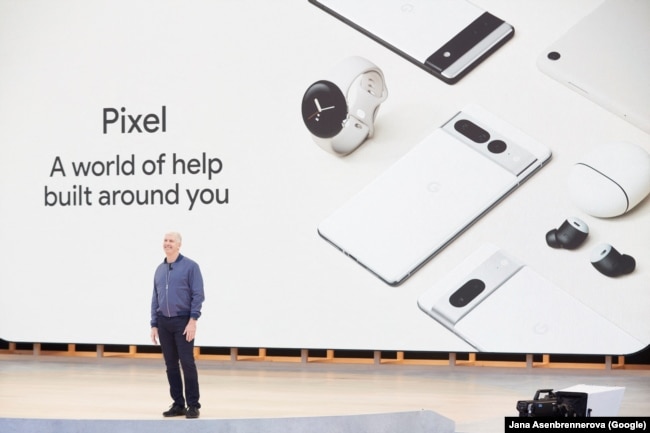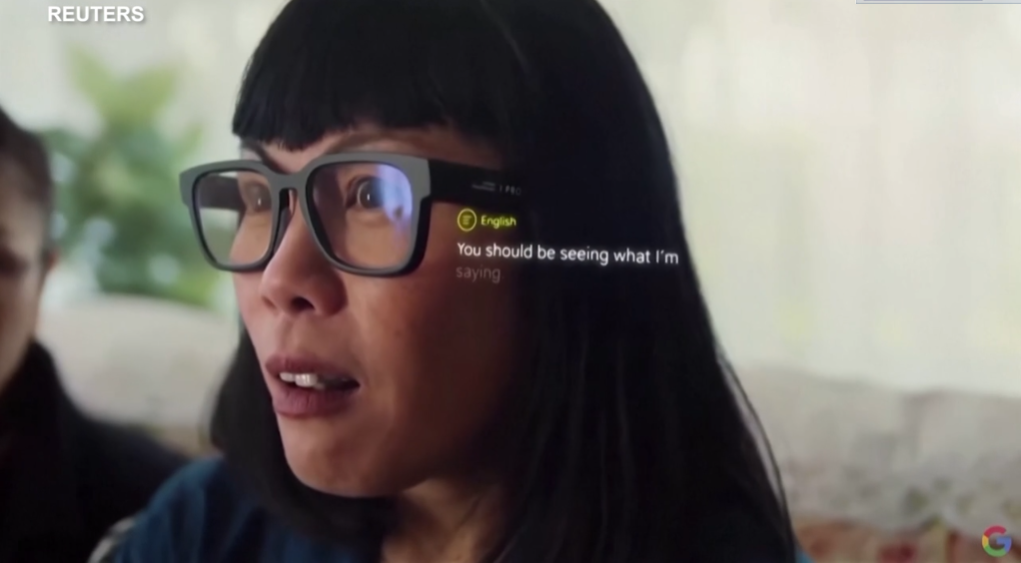Ten years after introducing “Google Glass,” Alphabet Inc. has created a new kind of smart eyeglasses. The company says the wearable computer device can translate different languages in real time.
A working model, or prototype, of the yet-unnamed device was presented to the public this week during the yearly Google I/O developer conference. Google did not say when the glasses might go on sale to the public.
The first Google Glass device included a wearable camera that could film what the wearers saw. That caused widespread privacy concerns. The camera element also gave Google Glass a kind of science-fiction look. The latest device looks more similar to traditional glasses.
A brief demonstration of the new eyeglasses described its translation ability, but did not provide additional details. The company also did not say whether the new device would be equipped with a camera.
A demonstration explained that a person wearing the glasses who talks with someone who speaks a different language can see the spoken words in their own language. The description showed translations involving English, Mandarin, Spanish and American Sign Language.
The new device was one of several products shared at the conference that are currently in development. The company said the products aim to better connect Google services with activities happening in the real world. This includes company offerings for searching and viewing maps, as well as other services using the latest developments in artificial intelligence (AI).
Eddie Chung, a director of product management at Google, spoke to developers about the new eyeglasses. “What we’re working on is technology that enables us to break down language barriers, taking years of research in Google Translate and bringing that to glasses,” he said. Chung said he thinks the product can provide “subtitles for the world.”
Other new products
Google also announced that a new tablet, or small hand-held computer, would be released in 2023. It is called Pixel Tablet. And a new version of its Pixel Watch will go on sale later this year. Selling more hardware like these devices could help Google expand profits beyond its advertising-based businesses.

Alphabet’s worldwide market share in smartphones is small, under one percent, technology researcher IDC estimates. Currently, legal problems related to Google’s dominance in mobile phone software and other areas threaten to limit the company’s ability to make progress with new products.
Google also presented some new software features to help with shopping. One lets users take video of items in a store and then ask the search app to identify those from Black-owned businesses. Another accepts a photo of a product and shows nearby stores where it is available.
Also later this year, Google Maps will begin showing a new view for some big cities that mixes its Street View and aerial images. The feature is designed “to create a rich, digital model of the world,” Google said.
I’m Jill Robbins.
Paresh Dave and Yuvraj Malik reported on this story for Reuters. Jill Robbins adapted it for Learning English.
_________________________________________________________________
Words in This Story
translation – n. a piece of writing or speech that has been put into a different language
artificial intelligence (AI) – n. the development of computer systems with the ability to perform work that normally requires human intelligence
subtitles – n. the words printed over a film in a foreign language to translate what is being said by the actors
dominance – n. the fact of being more powerful, more important, or more noticeable than other people or things
feature – n. a quality or important part of something
aerial – adj. supplied or performed by means of aircraft
What do you think of the new smart glasses? We want to hear from you. Write to us in the Comments Section.
